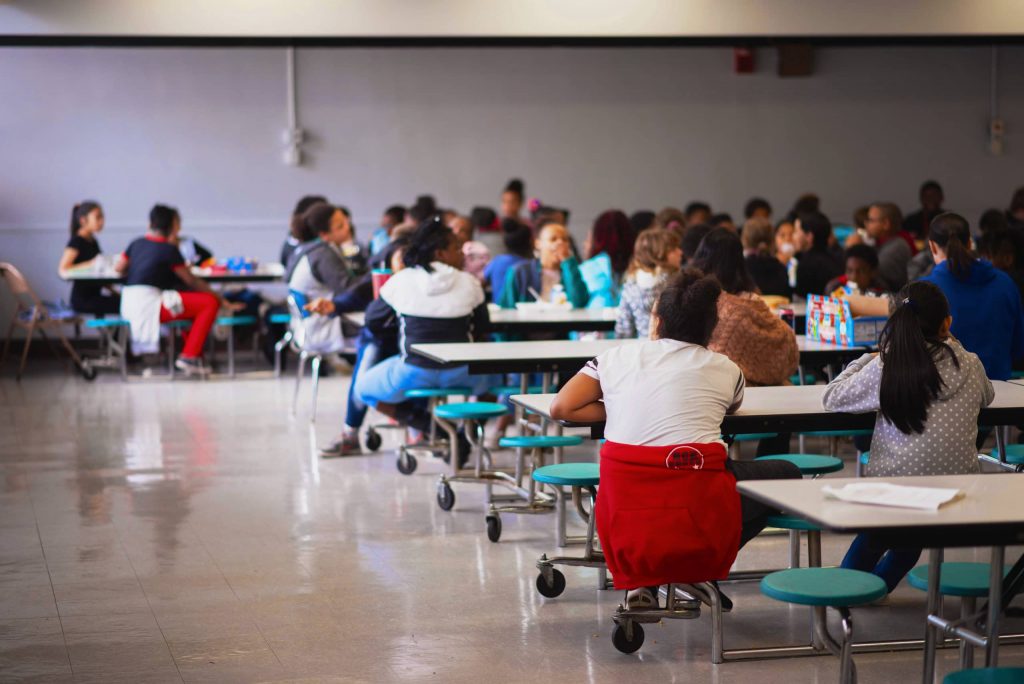We Need To Rethink The School Cafeteria
Kids need proper nutrition to maximize their learning potential. That’s why FoodCorps is reimagining school cafeterias.
Kids need proper nutrition to maximize their learning potential. That’s why FoodCorps is reimagining school cafeterias.

Karen Johnson for Scary Mommy
“They give us pizza… mozzarella sticks… chicken nuggets… and then pizza again…”
“We have to put fruit on our tray to get past the lunch staff, even if we aren’t going to eat it.”
“It’s loud and crowded and we don’t have enough time eat.”
Sound familiar? Are these the types of things your kids say about their school lunch experience? Mine sure do. Across the country, too many kids are only given a few minutes to scarf down mass-produced, processed foods in the school cafeteria. They cram into tight spaces, have their senses overloaded, and end up throwing away half their lunch because they ran out of time or don’t like what’s on their tray.
This is a major problem for America’s youth because guess what kids need to maximize their learning potential? Proper nutrition. And many schools across the U.S. just aren’t getting it done.
Well, an organization called FoodCorps is trying to change all that—from the types of foods kids are offered to the colors of the cafeteria walls to the amount of time they have to get lunch in their bellies. Their research study called “Reimagining School Cafeterias: A human-centered study on the current state and future of school food” involved schools from all over the country, from varying socioeconomic statuses and from both rural and urban areas, and it revealed some interesting findings.
Turns out, teachers and administrators don’t look at the lunch hour (or “lunch 20 minutes,” we should call it) as a positive experience. And, more importantly, kids aren’t exactly thrilled with their lunch time at school either. And as the future leaders of America, they deserve better.
“Schools are—in a sense—the nation’s largest restaurant chain,” the study states. “But too often, our education system approaches feeding 30 million kids a day as a burden: lunch time is a drain on learning time, cafeteria culture is a drain on school culture, and good meals are a drain on the general fund.”
So what can our nation’s school districts do about it, especially when funding is consistently slashed? When more and more pressure is placed on teachers to cram as much educational material and testing as possible into the school day? And when important parts of the school day like recess and P.E. are also getting cut?
How can we now ask schools to fix this too? Well, FoodCorps has some ideas.
Their study started off by asking a few basic questions as it aims to reshape the way we look at the school lunch experience. “What if school food could show us a future where every child gets the nourishment they need to thrive? What if it could affirm children’s cultures and identities and invite their agency to the table? What if it could show children they are valued and cared for in a way that food—the currency of human connection—has uniquely done for eons?”
What if school lunches weren’t a burden or an afterthought, but seen as a valuable part of the students’ day that’s just as important as science, math, and reading? Imagine the effects of changing this line of thinking.

FoodCorps in the News: 2024

FoodCorps’ Statement on the 2024 Election

FoodCorps Welcomes Rachel Willis as Interim President